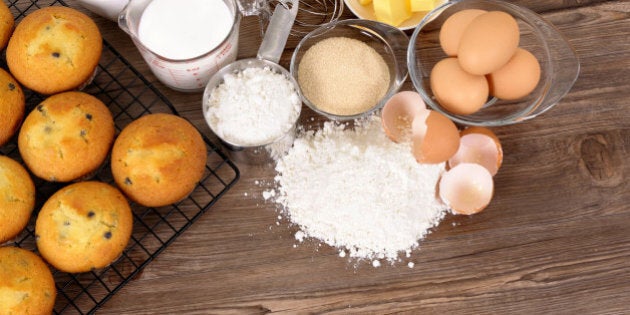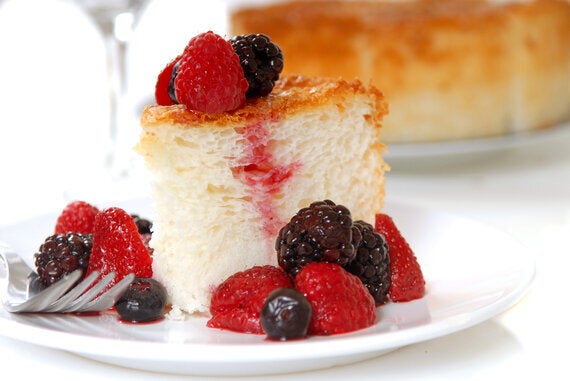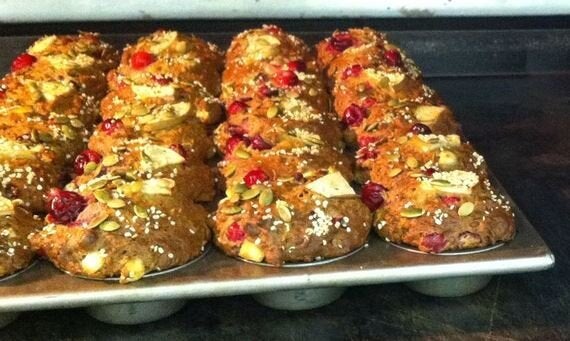
Is your New Year's resolution to start baking gluten-free? Did you ever want to try but didn't know how to start? Today is your lucky day....

If you are a baker, you know that you don't use bread flour when you make an Angel Food Cake, right? In fact, there are special blends of flour which are softer and more appropriate for such delicate baked goods. In gluten-free baking, the principles are similar. There are many flours that can be blended, and we don't have to use one kind for all baking.
Starting to bake gluten-free can be challenging even for those who are comfortable in the kitchen. There are so many flours to choose from and blend. How do you know where to begin? Start with the purpose of the baked good. Are you making cookies and cakes, healthy muffins, or bread?
For cakes and cookies, go with an all-purpose flour that has little aftertaste, enough fluffy powder to balance out the heavy grains and some glue. For muffins, I prefer whole grains and hold back on the glue depending on what other ingredients you are using in the muffins. Breads will depend on if you want a fluffy sandwich bread or a rustic homemade grainy one.

Every baker swears that their all-purpose flour blend is the best. How do you know if you will like it? I guess you'll have to test it, but understanding the flours can help you decide if you want to try them or not. Best I can do is to give you some pointers and basic guidelines so that you can get started.
Baking gluten-free almost always requires a mix of several flours and starches, as opposed to just one. The reason for this is because all flours have different properties in character and in weight. Balancing them is the trick.
Let's go back to the cake and cookie all-purpose, gluten-free flour blend. If you are looking for neutral-tasting flour, rice flour is a good base. There is brown rice and white rice to choose from. Not a very big nutritional difference as you may think.
If you only used rice flour, however, your cakes and cookies would be extremely dense and weighty, which is why we add starches like tapioca, corn and potato. They "lighten" the mix and help create a more light and airy effect. These starches are have no pungent smells or flavours.
Using a rice blend with starches will bake up soft and fluffy just like traditional cake. I don't recommend using ONLY starches (as we often do for Passover) because there is little structure and can feel too starchy in texture. Remember to balance.
Sometimes I hear people talk about the health factor of starches in bread and cakes. I wonder if the same discussion would be had at your local patisserie where you buy French pastries and baguettes? Do you look at the ingredients and become critical?
I guess you can be if it's your main course of the day. But really, people -- it's a treat, something to accompany your main course or a dessert that we crave. Try moderation and move on.
Muffins, on the other hand, are what I call a breakfast food or snack. To me, they should be more nutritious and filled with wholesome goodness. You'd be amazed at the taste and texture you can attain using whole grains without starch. I have a great flour blend for you to try below.
Gluten-free flours do not hold together on their own. If you simply made your mix as such, you would have cookies and cakes that fall apart and crumble. This is where the glue comes in -- or the xanthan or guar gums that hold it all together.
General rule is one half teaspoon of xanthan gum per cup of gluten-free flour for cakes and cookies, and one teaspoon or more per cup for yeast breads and such.
Experimenting with mixing your own GF flour mixes can be difficult without some guidelines. It may also be very time consuming. So, let me help you cut to the chase and give you some basic recipes that you can start with.
BASIC ALL-PURPOSE flour blend for cookies and cakes:
Weighing your flours can really help make a faster blend without the tediousness of measuring and leveling off of each flour.
375 g rice flour
215 g potato starch
185 g tapioca starch
87 g potato flour
15 g xanthan gum
MUFFIN flour mix:
550 g brown rice flour
115 g sorghum flour
60 g amaranth flour
40 g millet
Xanthan gum can be added, but less is needed if you are using mashed bananas, apple sauce, eggs and other binders.
Whatever mixes you choose to try, just get in there and start. 2016 is the perfect year to start to bake your own treats at home.
MORE ON HUFFPOST:
